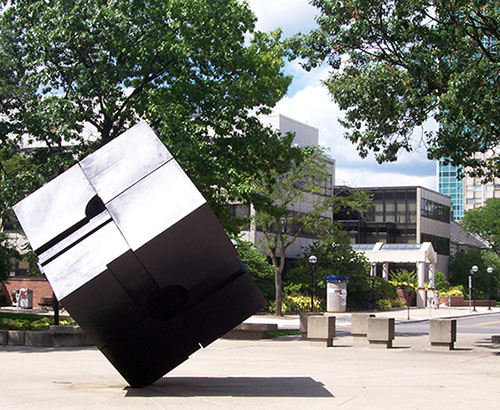This summer I began running. Mostly, I ran from my problems. But I also took up running because I wanted to go places or more specifically, to revisit places. On particularly motivated mornings, I would roll out of bed, lace up my torn sneakers, relish in the fresh air, and start jogging. But the air would always feel a tad bit hot, the sneakers always needed to be adjusted, and my legs always cramped at the just the wrong time. So, I usually found myself stopping mere minutes into my grand exercise intentions.
It would never do to return home in shame and humiliation, though. The thirty minutes allotted to exercise was instead spent wandering into suburban neighborhoods. That was when I realized something amazing. When you walk, your body hates you a lot less than when you run. I began to enjoy the quietly watered lawns, the perfect peace of an empty sidewalk. There was no more pounding blood or pulsating lungs. Only lazy strolls and the occasional passing smile. I even appreciated the indistinguishable nature of the houses. Each one had their own pleasantly framed windows, their own shade of grey or blue, and white door. But occasionally, I meandered into the strange and unfinished.
These were the neighborhoods that were still under construction.
Without the affable shells of paint and shingling, they more resembled the outlines that I would scrawl in kindergarten than a home. Knowing this, the builders always posted a rendering, a peek at future glory. A rendering is never bright. That would be entirely too crass. No, a rendering should be lightly shaded, the lines should have the texture of a sketch. A rendering is vague, but the sun is always shining in a rendering, so we cease to notice the other details. The best characteristic of a rendering is that it diverts your attention from the messiness of actual construction. It skips to the neatness when all the splinters have been hidden by wallpaper brick. Once finished, the houses would be as pleasantly smooth as all the rest. The flatness of a rendering imprinted onto the real world. Eventually, though, I was forced leave the calm of the suburbs for the chaos of campus.
Here there is no building alike and no discernible theme or pattern to unify them. Ross is different than Mason is different than West Hall. It scared me when I first came to Ann Arbor. The mess of navigating everywhere. The only similarity is the endless construction. No matter where I am, there seems to be an obsession with building and rebuilding. As soon as one thing is finished, we find an excuse to improve something else. And ultimately it is the same reason that I came to the University of Michigan despite the jumble. It was because I had a rendering of myself. Myself finally finishing a run. Myself getting a job. But what can I do? I am still under construction.






 Even if they are oft ignored, public art works have never been useless. In fact, they are all that we lack. They are constantly present, which is more than can be said about people. People pass too quickly. Blink and they disappear. For people, this University is only a temporary place, a jumping off point for bigger and better. Public art, on the other hand, cannot move from their designated place. They must live their eternal lives as they were built. Thus, they can act as an orienting, dependable force in a constantly shifting environment. At the same time, they are constantly adaptable, too. They easily morph to suit each individual desire. I will never see the Cube with the same eyes. Each day it becomes something new. Perhaps tomorrow, I will notice a new feature that had been there all along. Perhaps I will return twenty years later with my hair already graying, and remember exactly how I felt that very first day of orientation, the day I was introduced to the soaring beauty of the campus. Although I will only be at the University of Michigan four years, I know each and every one of those days have been made better, more satisfying by the inclusion of art, even though I may not have had the time to properly appreciate it. But that is alright. Public art is not ostentatious that way. It does not demand anything of us. But it also forms the very heart of the University of Michigan.
Even if they are oft ignored, public art works have never been useless. In fact, they are all that we lack. They are constantly present, which is more than can be said about people. People pass too quickly. Blink and they disappear. For people, this University is only a temporary place, a jumping off point for bigger and better. Public art, on the other hand, cannot move from their designated place. They must live their eternal lives as they were built. Thus, they can act as an orienting, dependable force in a constantly shifting environment. At the same time, they are constantly adaptable, too. They easily morph to suit each individual desire. I will never see the Cube with the same eyes. Each day it becomes something new. Perhaps tomorrow, I will notice a new feature that had been there all along. Perhaps I will return twenty years later with my hair already graying, and remember exactly how I felt that very first day of orientation, the day I was introduced to the soaring beauty of the campus. Although I will only be at the University of Michigan four years, I know each and every one of those days have been made better, more satisfying by the inclusion of art, even though I may not have had the time to properly appreciate it. But that is alright. Public art is not ostentatious that way. It does not demand anything of us. But it also forms the very heart of the University of Michigan.


